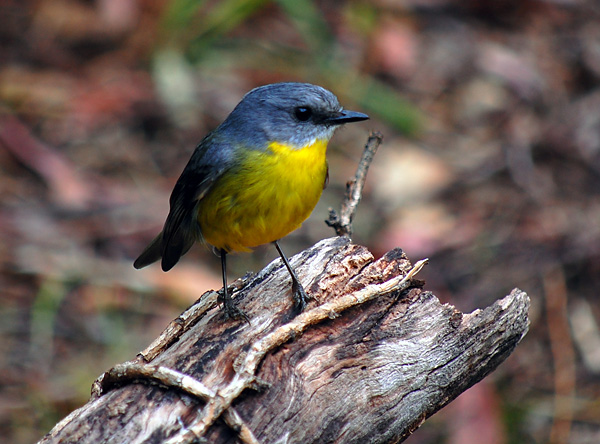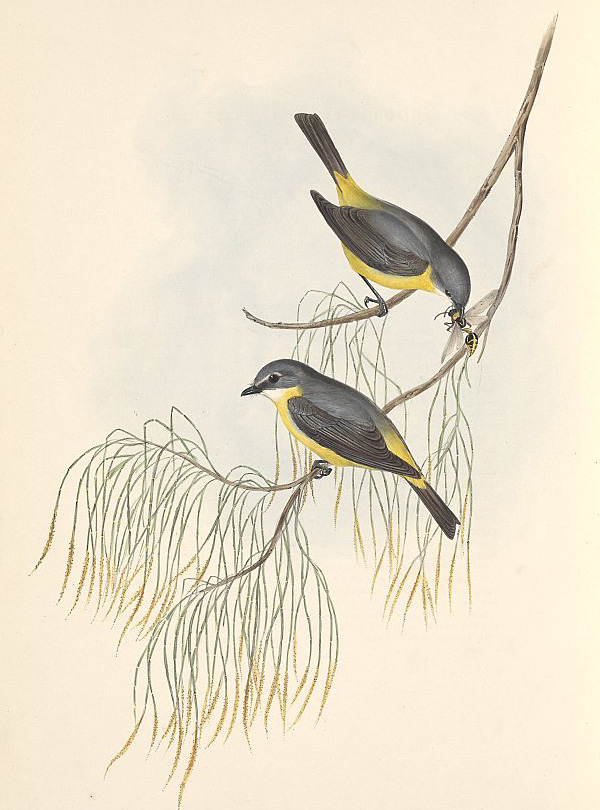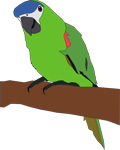Eastern Yellow Robin
Eopsaltria australia
Family: Petroicidae (Australo-Papuan Robins, Scrub-robins, 20 species in Australia)
Size: 15 cm
Distribution: Within about 500 km of the coasts of NSW, South QLD, Most of VIC
Status: Common
Habitat: Wet open forests, woodlands, coastal thickets
References: Simpson and Day, Reader's Digest
The Eastern Yellow Robin is a lovely, friendly bird. They are curious and inquisitive. Several times I have almost (but not quite) had one fly close enough to land on me. Since they are so small this is not annoying like it would be if a magpie did that.
Once when I was building a wilderness shelter two of them were hanging around the whole time, sometimes sitting on the shelter framework about half a metre from me.

Photo: Blaxland, Blue Mountains NSW. High Resolution (1884 x 1518)

Photo: Blaxland, Blue Mountains NSW. High Resolution (2346 x 1633)

Artwork: John Gould, 'The Birds of Australia', 1848. Original Scanned Image.
Some Birdwatching Resources
|
 NEW: Know Your Birds, by Louise Egerton.
NEW: Know Your Birds, by Louise Egerton. Revised edition 3 July 2019. Paperback / softback, 176 pages. It has an orange cover. The original edition was 2005 and has a blue cover. Some of the book sellers listed here show the photo from the original/older blue cover edition, but the rest of the info (including the publication date and ISBN) are from the newer revised 2019 edition, so presumably that's the one you'll get.
This book has very high quality large photographs of the birds (as in actual photographs). Most of the photos take up a whole page for each bird photograph. "Know Your Birds" only has a selection of the most common birds, and not all the birds that are found in Australia. This makes it very good for beginners — since most of the field guides have all the birds — and it can be confusing looking at six almost identical species of birds, not knowing that five of them are rare and it's probably the common one that you're looking for. Which would be the only one listed in this book.
Purchase from Australia (The Nile)
Purchase from Australia (Fishpond)
Purchase from Amazon.com.au (Australian Site)
| See AlsoAustralian Bird Field Guides
Return to Australian Birds
Return to Site Map
Share This Page
australia birds
Content is copyright © Survival.ark.au 2005-2025 All Rights Reserved. Terms of Use. Definitely read the disclaimer before trying anything from this website, especially including the practices and skills. This website uses affiliate links – this doesn't cost you any more, but I get a commission on purchases made through the website. As an Amazon Associate I earn similarly from qualifying purchases.
|





